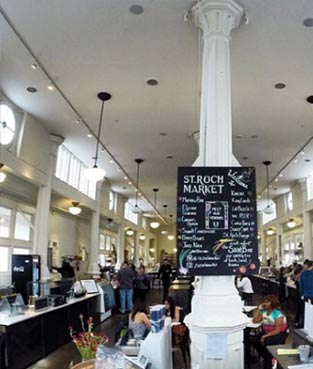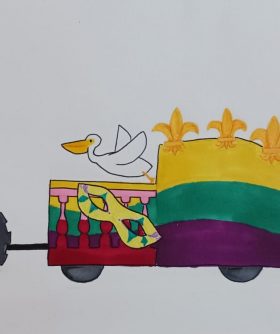Ninth Ward
A very distinctive region of New Orleans, the Ninth Ward refers to the area located in the easternmost portion of the city. This downwater area of the city is famous in name for being the largest, geographically speaking, of New Orleans' 17 wards.
To the south, the Ninth Ward is bounded by the Mississippi River. On the western or "upriver" side, the Ninth Ward is bounded by (going from the Mississippi River north to Lake Pontchartrain) Franklin Avenue, then Almonaster Avenue, then People's Avenue. From the north end of People's Avenue, the boundary continues on a straight line north to Lake Pontchartrain: this line is the boundary between the Ninth and Eighth Wards. Lake Pontchartrain forms the north and northeastern ends of the ward. Saint Bernard Parish is the boundary to the southeast, Lake Borgne the boundary further southeast and east, and the end of Orleans Parish forms the eastern boundary at the Rigolets.
Pre-Katrina, landmarks of this region were given extra exposure by the Hot Boys music video "We On Fire," which was filmed in part in the Ninth Ward. Many local musicians now frequently mention the area within their tunes, and many of the neighborhood's landmarks have been featured in TV and film.
The area along the riverfront was developed first, at the start of the 19th century, followed by the natural high land along Gentilly Ridge. The designation of this area as the "9th Ward" dates from 1852, when the boundaries of the Wards of New Orleans were redrawn as part of the city's reorganization from three municipalities into one centralized city government.
Along the lakefront stood various fishing camps built on piers, the most famous collection being Little Woods. Such camps were common along the lakefront in the 19th and early 20th centuries. The collection of camps at Little Woods was the longest-lasting concentration, with many surviving until Hurricane Georges in 1998.
The area of the 9th Ward on the back side of St. Claude Avenue experienced the city's most significant and longest-standing flooding from the New Orleans hurricane of 1915, due to a break in the protection levee at Florida Avenue. Then, the Industrial Canal was dredged through the neighborhood at the start of the 1920s.
The 9th Ward neighborhood was thrust into the spotlight once again during Hurricane Katrina. Much of the 9th Ward on both sides of the Industrial Canal experienced catastrophic flooding during Hurricane Katrina in 2005, a majority of which was caused by storm surges through multiple severe levee breaks along both the Mississippi River Gulf Outlet (MRGO) and the Industrial Canal.
During several days of the hurricane aftermath, live television news coverage from reporters and anchors who had little familiarity with New Orleans frequently included misinformation, such as references to the Lower 9th Ward simply as "the 9th Ward" and misidentification of helicopter shots of the Industrial Canal breach as the 17th Street Canal breach (which was actually at a nearly opposite end of the city.)
Today, much of the Ninth Ward has recovered or is well on its way to recovery. Reconstruction efforts have been buoyed in part by organizations such as Brad Pitt's "Make It Right" project, which focuses on developing and rebuilding homes in the Lower Ninth Ward.



